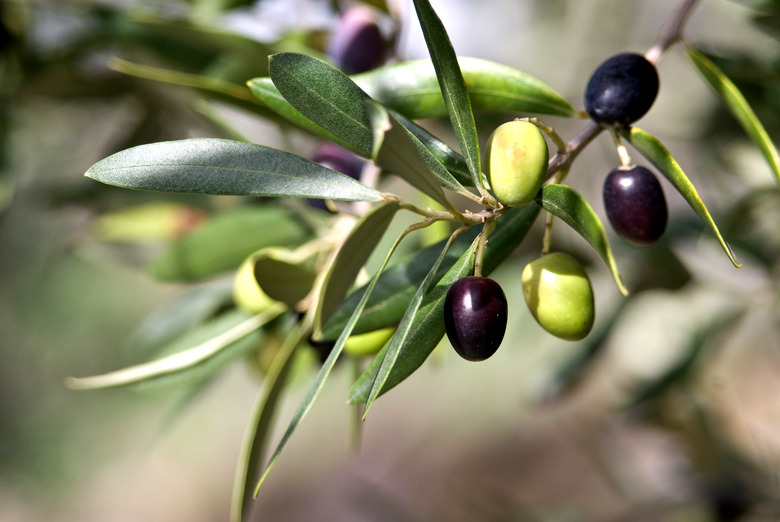How To Grow Olive Trees From Cuttings
Olive trees (Olea europaea) are world renowned for their fruit that has a salty, robust flavor when cured, but the trees themselves are beautiful, with distinctive, gnarled trunks adorned with thin silvery-green leaves. Best of all, you can easily grow your own olive tree with nothing more than a clipping. Gardeners in the warm climates of U.S. Department of Agriculture plant hardiness zones 8 through 10 tend to have the best luck growing olive trees since most varieties do best in areas with cool nights, warm days, and few freezing temperatures, but some newer cultivars are hardy enough to survive in cooler Northern temperatures.
Choose a Parent Tree
Choose a Parent Tree
The best time to propagate olive cuttings in most climates is between August and September. When choosing a tree for clippings, remember that a tree grown from a cutting will be a clone of the original tree. This means you should look for a tree that thrives in your climate, is the right size for your yard, and produces enough fruit for you to use. This last factor is important because highly productive olive trees can leave you with a massive mess of olives at the end of each season that few home chefs would ever be able to use. Ideally, the tree should have plenty of new growth from the last year as well.
Pick the Right Clipping
Pick the Right Clipping
Find a healthy branch that is less than a year old and about as wide as a pencil. Use scissors to take an 8-inch clipping, cutting the branch at an angle about 1/8 of an inch below a leaf node. Remove the bottom four to six leaves and wrap a wet paper towel around the end of the branch. Store the clipping in a plastic bag to keep it moist until you can plant it.
Prepare Your Planting
Prepare Your Planting
Olive clippings can be started in a commercially prepared rooting mixture, or you can make your own by combining playground sand with either milled peat or vermiculite in equal parts. Moisten your rooting mixture well and then squeeze out any excess moisture with your hands. Fill a 6-inch-tall planting container with drainage holes with the rooting mixture up to 1/2 inch of the rim. Poke a pencil 4 inches deep in the pot for your cutting.
Dip your cutting into a rooting hormone and then shake off the excess powder before inserting the cutting into the hole. Pack the rooting mixture around the base of your future tree trunk. Place the pot in a warm area without drafts that stays between 60 and 70 degrees Fahrenheit and gets indirect sunlight.
Maintaining Your Cutting
Maintaining Your Cutting
Mist your cutting twice a day and lightly water the rooting mixture whenever it starts to feel dry in order to keep the bottom of the cutting moist. It will take about two to three months for roots to develop. Test for root growth by lightly pulling on the cutting and seeing if it pulls right out of the pot. If it gives resistance, this means roots have started to grow. Once roots have developed, stop misting the cutting and water the rooting mixture once a week.
In spring, move the sapling to a sheltered area outdoors and transplant it to its permanent location in fall. It takes olive trees grown from clippings four years to start producing fruit, though the first crop will be small.
